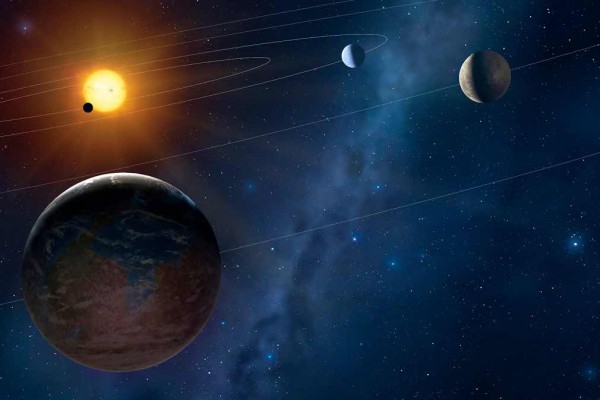The massive amount of space debris entombing the Earth has long posed a huge problem for space agencies everywhere. Inevitably, the amount of junk wrapped around Earth will eventually reach a tipping point, where a single collision could trigger a chain reaction that would flood the sky with an innumerable amount of fragments. Now, Chinese engineers believe they may have found a solution to this problem, thanks to a junk-eating rocket that converts space debris into rocket fuel.
Space debris is a corollary of human activities in space, which includes rockets, satellites, ejections from spacecraft, waste from manned space missions and collisions from other debris. The amount of space debris has become a growing problem for Earth-orbiting satellites.
In 2009, for instance, an Iridium communications satellite collided with a defunct Russian military satellite dubbed Cosmos 2251. The high-speed collision produced more than 1,000 fragments greater than 10 centimeters in size. The fragments wrapped around the globe, entombing the planet in a nefarious cloud of space debris. Since then, engineers have been trying to come up with new, creative ways to deal with the problem.[1]
Beyond the threshold
If the amount of space debris continues to become denser, eventually, it will create a snowball effect where one collision ensues another collision until the entire planet is littered with cosmic waste. Worst estimates suggest the amount of space debris has already surpassed its critical capacity and that the domino effect has started.
An obvious solution to the growing threat of space debris is finding a way to remove it. A popular option is to annihilate the space debris with a laser, which breaks them into parts and causes the remains to disintegrate.
The problem, however, is pieces of space debris cannot be dealt with this way because they are small, making them difficult to locate and track. Other solutions have suggested collecting space debris with a giant net or some other collecting device. Nevertheless, these missions would be extremely limited in the amount of fuel they could carry.[1]
Junk in the rocket’s trunk
In an effort to solve this problem, Lei Lan and researchers from the Tsinghua University in Beijing, China, have offered an alternative solution. Their plan is to build an engine that converts space debris into fuel, so that it can propel itself with the material it is designed to dispose.
Their efforts would be focused on space debris less than 10 centimeters in size, which would be too small for a laser to handle. First, the craft would collect the space debris with a small net. The space junk would then be decimated by a laser or ground up into powder using special, abrasive spheres in a “ball mill”.[1]
“Debris with larger size is first disintegrated into small pieces by using a mechanical method. The planetary ball mill is then adopted to grind the pieces into micrometer or smaller powder,” the researchers wrote in the study.[2]
The powder would then be converted into plasma, consisting of positively charged ions and negatively charged electrons. The positive ions would flow into a high electric field, which would accelerate them to higher energies and generate thrust as they are expelled. The force of the thrust, of course, would be determined by the size and amount of space debris the device collects.
While the space engine sounds good in theory, it is not yet known whether it can work in practice. Skeptics note that the engine would not be a self-contained system, since it would require energy from the outside to ground up the space debris. However, the researchers note the energy necessary to convert the space junk into fuel could be obtained through solar and nuclear power, although, they didn’t elaborate further on the specifics about how this could be achieved.
Although the mechanics behind the junk-eating space engine have yet to be resolved, the device offers a blueprint for how engineers can possibly tackle the challenge at hand. Whatever the solution may be, the fact is, it’s long overdue for space engineers to take out our space trash.
Sources include:
[1] TechnologyReview.com
[2] IBTimes.com.au
















